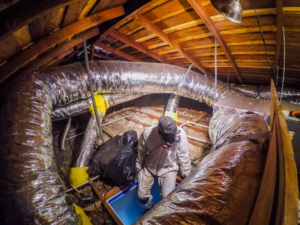Finding the perfect home takes more than luck or timing. Buyers today come in with sharper expectations. They no longer just walk into a house and fall in love. They come prepared, informed, and emotionally guarded.

Modern buyers aren’t only influenced by visuals anymore. They evaluate layout logic, energy efficiency, and even noise patterns. They check outlets, internet speeds, and neighborhood rhythms. A home must prove its worth on every level. Visit https://www.altitudehousebuyers.com/ to learn more.
Data has become a silent guide behind every decision. House buyers study trend reports, algorithm-based recommendations, and predictive pricing tools. It’s not just about dreams—numbers shape desire. Buyers want proof as much as they want possibility.
Social behavior is also shaping how houses are viewed. Buyers imagine how spaces will perform in their digital lives. Rooms double as studios, lounges become stages, and lighting matters more for video calls than ambiance. Every square foot is evaluated through a lifestyle lens.
Privacy expectations are at an all-time high. Buyers scan for shielded windows, smart locks, and soundproof corners. Open layouts are still loved, but private retreats are prized more than before. The home must offer balance between exposure and seclusion.
Some buyers now assess how a house will handle unexpected chaos. They ask about evacuation paths, backup power, and flexible zones. A good house feels like a calm command center in a storm. Stability is part of the fantasy.
The desire for future-ready homes is gaining momentum. Buyers seek smart infrastructure without needing flashy tech. They want homes that can adapt, not just impress. Simple wiring access, modifiable shelving, and multi-use rooms feel revolutionary.
Sensory appeal is becoming more complex. It’s not only about a pleasant scent or fresh paint. Buyers consider how a home sounds at night and how floors feel barefoot. Sensations stick with them more than square footage.
Buyers are also showing interest in local sourcing during construction. They ask where wood panels came from or who built the cabinets. Authenticity is a growing influence in perceived value. A home that tells a story feels more human.
There’s a rising interest in emotionally safe architecture. Rounded corners, cozy lighting, and soft transitions signal comfort. Buyers pay attention to how a home makes them feel before they think. Design that reduces tension can silently close a sale.
Some buyers prefer homes that let them edit as they live. They look for clean foundations that welcome personal layering. Neutral zones become a blank canvas for future whims. Predictable is out—potential is in.
Instead of massive spaces, buyers crave meaningful micro-experiences. They’ll fall in love with a breakfast nook more than a grand dining hall. One charming shelf can outshine ten closets. Small moments matter more than scale.
The pandemic era redefined what “livable” means. Buyers now want built-in separation between rest, work, and recharge. They seek homes that help them unplug and re-engage fluidly. It’s about a rhythm that aligns with real life.
Buyers are growing sensitive to light flow across different times of day. A bright morning kitchen or golden-hour balcony becomes a deal-sealer. Natural light isn’t just aesthetic—it’s emotional nutrition. Homes that track the sun feel alive.
Noise mapping is quietly influencing buyer decisions. From lawnmowers to late-night echoes, buyers listen before they speak. A home’s silence can be louder than any welcome greeting. Tranquility now has real estate value.
Multigenerational flexibility is increasingly requested. Buyers ask if rooms can be divided, reconnected, or isolated. Aging parents, returning children, and even tenants play into the design math. Fluid boundaries define tomorrow’s comfort.
Unexpected spaces now thrill buyers more than big ones. A reading cove under stairs or a rooftop nook feels like luxury. Function and charm are now more seductive than uniformity. Buyers crave homes that whisper, not shout.
Environmental awareness is influencing behavior beyond buzzwords. Buyers inspect insulation thickness and air quality indicators. It’s not just about savings—it’s about personal wellness. A healthy home trumps a stylish one.
People also notice how homes make them move. A home that invites pacing, lounging, and stretching feels better. Buyers now test how space flows with their habits. Comfort is choreography, not just furniture.
There’s also a new wave of introspective buyers. They look for homes that reflect not what they have, but who they want to become. A quiet creative wants a space that fosters daydreams. A driven worker seeks rooms that generate focus and momentum.
Buyers today are rarely wowed by tricks. Flashy upgrades don’t impress unless they align with deeper needs. A wine fridge means nothing to someone seeking grounding. Features must speak to values, not just budgets.
Connectivity also matters more than ever before. Buyers test cell signals, router range, and streaming performance. A stunning view means little if the connection constantly drops. Digital flow is now a layer of livability.
More buyers are questioning past real estate norms. They ask why guest rooms sit unused or why master suites feel so distant. Functionality is replacing formality. No room survives without a reason to exist.
Some prefer homes with imperfections that feel honest. Slightly worn wood floors or quirky tiles offer personality. Buyers are wary of over-polished spaces that feel artificial. Authentic charm outweighs sterile perfection.
Outdoor transition zones are also in high demand. Covered patios, sunbreak porches, or indoor-outdoor thresholds make a difference. Nature must not just be seen—it must be touched. Breathing fresh air from inside counts more than ever.
Buyers also now visualize exits before entrances. They plan how furniture will leave just as much as how it enters. Moveability affects long-term investment. A good home should be easy to evolve or leave when needed.
Storage is no longer about quantity but intention. Buyers look for hidden drawers, multi-use closets, and intuitive organization. Spaces that invite order bring calm. Clutter begins with bad design, not too many things.
There’s also a growing respect for silence between walls. Buyers pay attention to what can’t be seen—insulation, soundproofing, and wall integrity. A solid structure becomes emotional insulation. Peace becomes part of the blueprint.
Temporary homes are now treated with long-term seriousness. Even buyers of short-stay properties want quality and care. Time in a house doesn’t dictate investment anymore. All homes deserve dignity, no matter how long they’re lived in.
Buyers with hobbies now drive design adjustments. A cyclist wants wall hooks; a painter wants north-facing light. Personal needs translate to architectural must-haves. No buyer is generic in 2025.
Unexpected triggers shape rejection more than ever. An awkward door swing or dim hall can dissolve interest instantly. Buyers feel first, analyze second. One wrong mood can undo weeks of interest.
Reimagining resale value has also become part of the decision. Buyers no longer think only about flip potential. They weigh emotional equity—how much joy and peace a space will return. Value is becoming personal.
Some seek homes they never need to leave. They look for spaces that serve as a restaurant, theater, gym, and escape. The world outside has grown unpredictable, so homes become their constant. These buyers think ten years ahead.
In contrast, others want frictionless departure. They want a home that lets them leave at a moment’s notice. Easy packing, clear exit paths, and transferable appeal shape decisions. Freedom must be designed in.
Buyers also notice how light and shadow change a space’s mood. A dim kitchen at 5 PM or a bright bathroom at dawn matters. Emotional intelligence exists in architecture. Buyers sense if the house understands them.
The idea of ownership itself is shifting. Some buyers care more about experience than tenure. The focus isn’t always on “forever homes” anymore. Even brief stays must feel fulfilling.
House buyers in this era have grown more intuitive. They trust their gut and listen to quiet signals. The right home doesn’t always scream—it often hums gently in the background. A match is found in moments of recognition, not persuasion.
They no longer ask only about square footage or property lines. They want to know what the house gives back when life gets hard. Shelter is no longer enough. Homes must now nurture, protect, and evolve.








